Idea by
César Mauricio Sánchez - Andrea Parra Ullauri
CMAM Laboratorio de Arquitectura
Call for ideas 2021
URBAN IMMUNOLOGIC SYSTEM
URBAN IMMUNOLOGIC SYSTEM
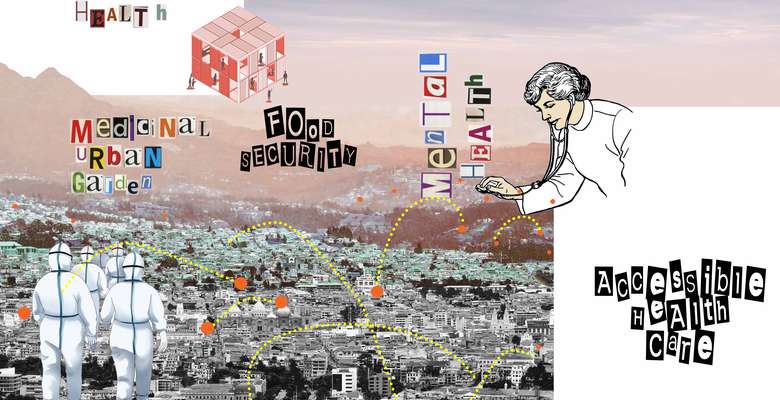
- Systemic changes
What are the boundaries of health? It is really a human right? Which is the role of buildings in creating healthy, safe and equal communities in a pandemic escenario?. Questions emerged when our team decided to participate in an architectural contest whose objective was designing a new hospital for a public university in Ecuador during the quarantine in 2020. The situation opened a broad discussion over how to approach a specific project when the requirements of social distancing, food security, internet accessibility and limited mobility were priorities to preserve good health, not only considered as the lack of illness.
As the immunological system, our idea was to develop an adaptive constructive system that can be built as small units spread over the neighborhoods, serving as temporary hospital rooms, telemedicine capsules, urban gardens or disinfection cabinets for an immediate emergency response. Later on, the modules could be dismounted and transported to the final site.
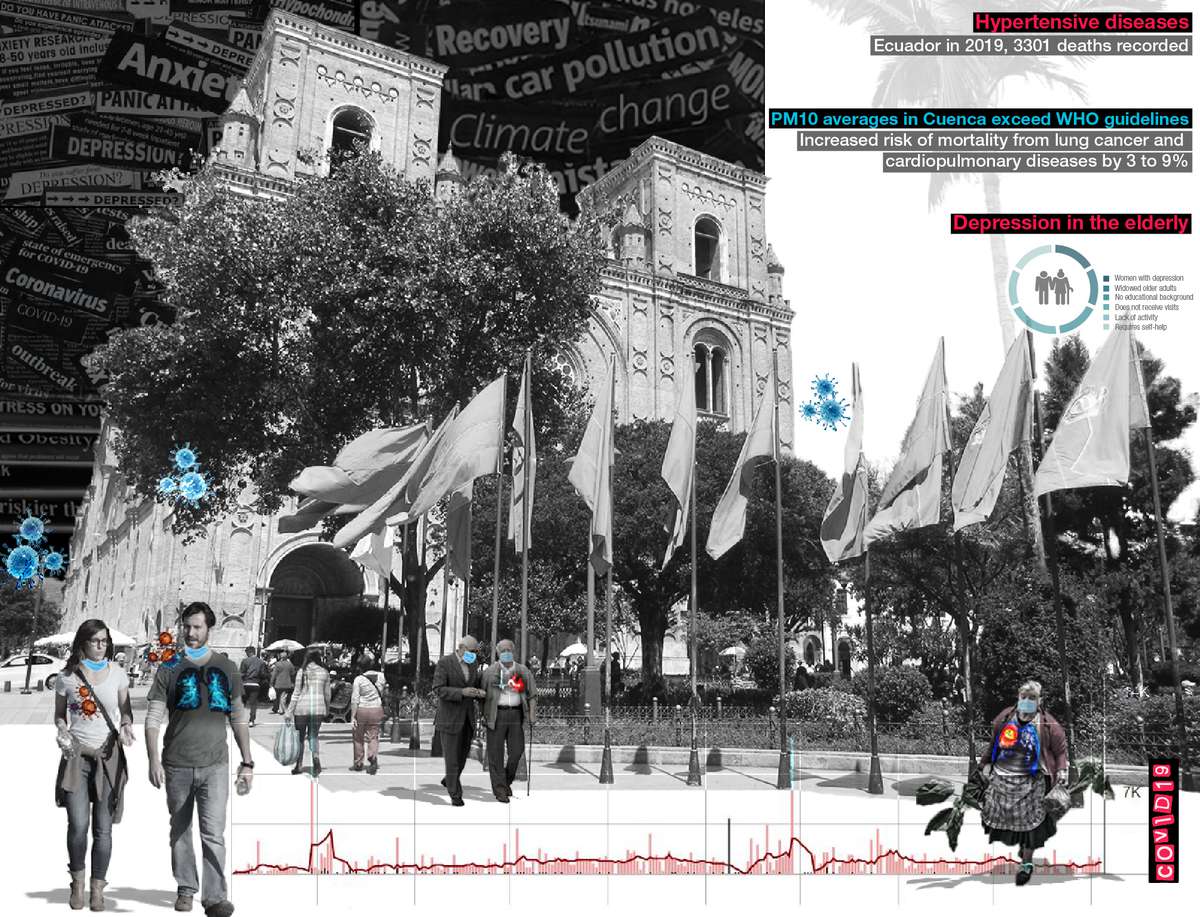
Climate change, air pollution, car dependendency, low social interaction, malnutrition, stress among others are pathologies developed in cities like Cuenca - Ecuador and are causing health issues and early deaths. Also, COVID19 demonstrated how vulnerable are the health systems especially in developing countries, and its connection with food security and adequate environments for living.
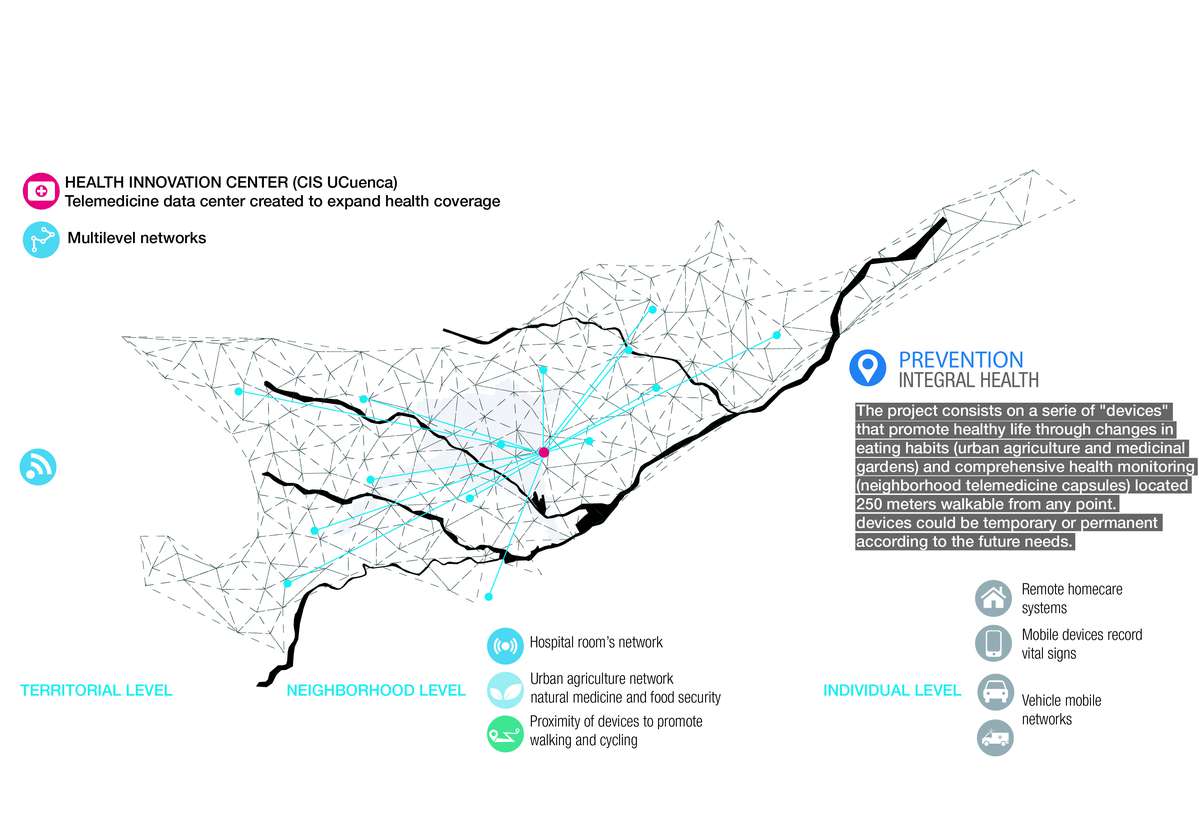
Prevention is the best treatment for any illness, therefore the urgent need to include an urban planning approach that integrates physical, mental and emotional health as the main axis. The case illustrates the city of Cuenca and the proposal of a multilevel network which is generated around a new Health Innovation Center (CIS UCuenca) considered like a telemedicine data center using both physical and virtual infrastructure to expand health coverage.
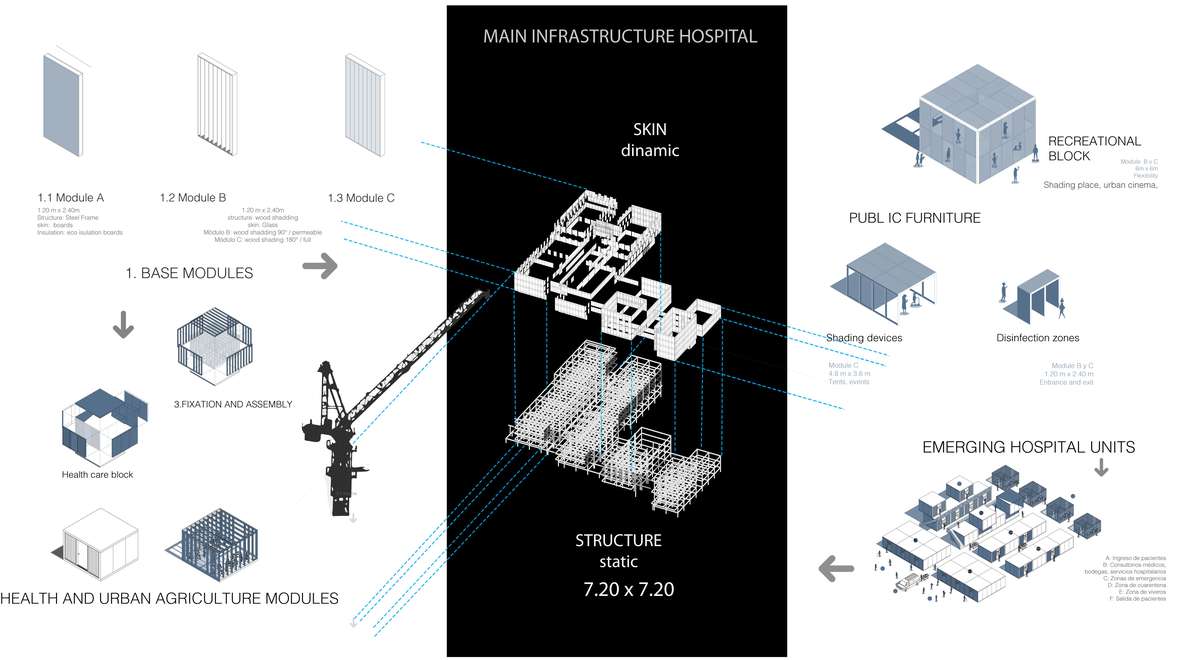
Lightweight and flexible constructive system with steel framing and modular panels of fiber cement and timber are proposed to use in two stages: 1) During the sanitary emergency are mounted in units for telemedicine (covering internet access), gardens for edible and medicinal plants, furniture and disinfection cabinets, or temporary hospitals in case of collapsed system. 2) Panels are dismounted and transported to the site to join the building envelope. This strategy optimizes resources.
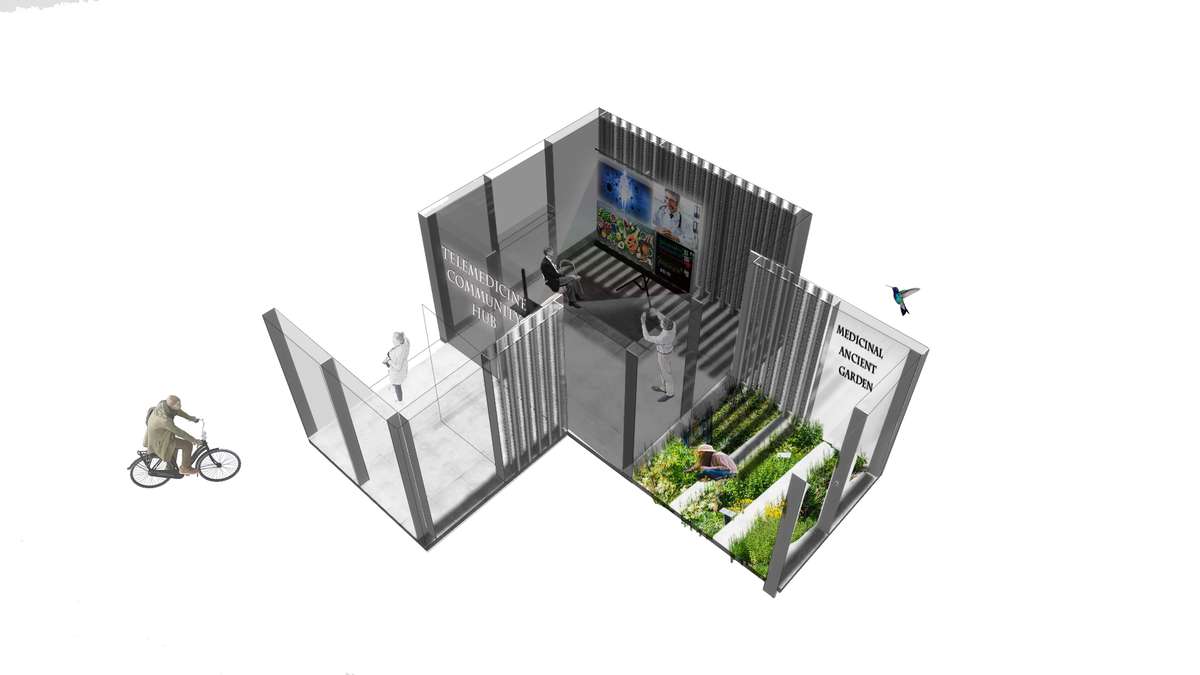
Units can be constructed in plazas, streets or vacant sites through the city with a 250m radius to allow walking and biking while limiting mobility in a neighborhood scale, and therefore prevents the virus from spreading. Modular construction controls the capacity of the unit and enables physical distance but improves neighbors' common activities You can go to your nearest module to join a teleconference with your doctor in a simulation environment and also you can grow your own medicine there
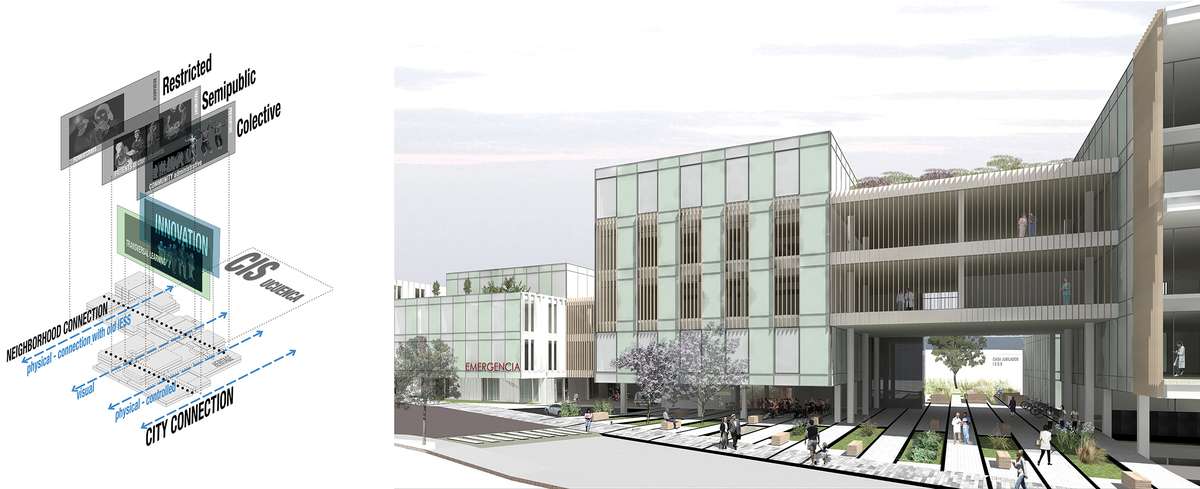
After the use of the units to respond the sanitary emergency, the pieces will be transported to the CIS site for the construction of the new hospital. The concept is based on “diffuse frontiers between health, public space and learning”. The scheme proposed a series of filters which allow using solids and voids to generate common and restricted spaces. Also it permits connections with the city, the neighborhood and the pre existing building.
URBAN IMMUNOLOGIC SYSTEM
URBAN IMMUNOLOGIC SYSTEM

- Systemic changes
What are the boundaries of health? It is really a human right? Which is the role of buildings in creating healthy, safe and equal communities in a pandemic escenario?. Questions emerged when our team decided to participate in an architectural contest whose objective was designing a new hospital for a public university in Ecuador during the quarantine in 2020. The situation opened a broad discussion over how to approach a specific project when the requirements of social distancing, food security, internet accessibility and limited mobility were priorities to preserve good health, not only considered as the lack of illness.
As the immunological system, our idea was to develop an adaptive constructive system that can be built as small units spread over the neighborhoods, serving as temporary hospital rooms, telemedicine capsules, urban gardens or disinfection cabinets for an immediate emergency response. Later on, the modules could be dismounted and transported to the final site.
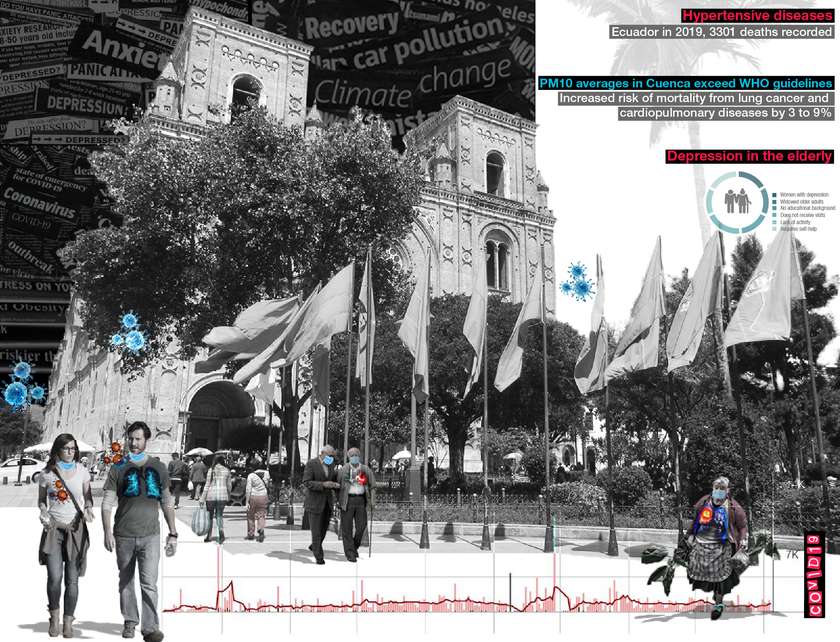
Climate change, air pollution, car dependendency, low social interaction, malnutrition, stress among others are pathologies developed in cities like Cuenca - Ecuador and are causing health issues and early deaths. Also, COVID19 demonstrated how vulnerable are the health systems especially in developing countries, and its connection with food security and adequate environments for living.
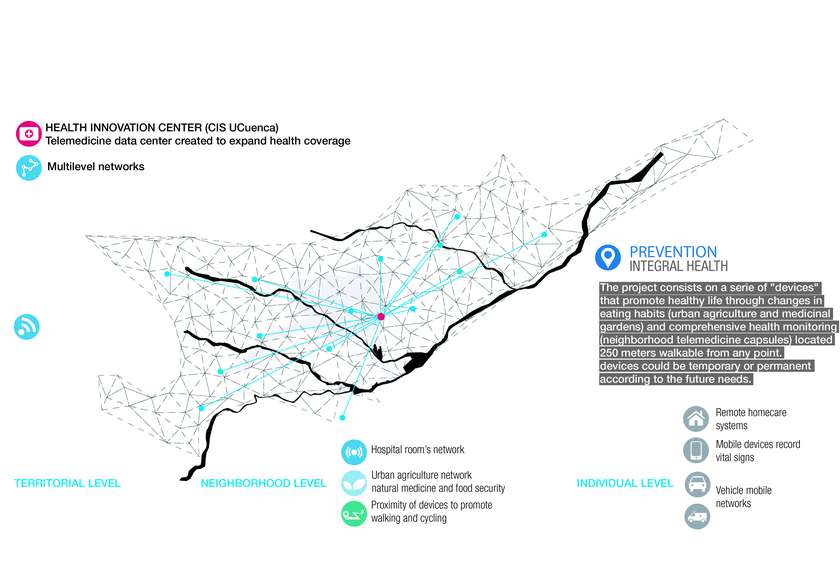
Prevention is the best treatment for any illness, therefore the urgent need to include an urban planning approach that integrates physical, mental and emotional health as the main axis. The case illustrates the city of Cuenca and the proposal of a multilevel network which is generated around a new Health Innovation Center (CIS UCuenca) considered like a telemedicine data center using both physical and virtual infrastructure to expand health coverage.
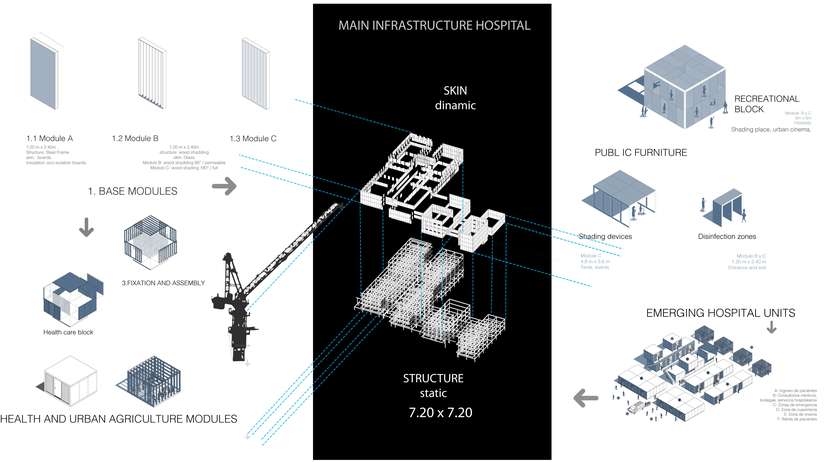
Lightweight and flexible constructive system with steel framing and modular panels of fiber cement and timber are proposed to use in two stages: 1) During the sanitary emergency are mounted in units for telemedicine (covering internet access), gardens for edible and medicinal plants, furniture and disinfection cabinets, or temporary hospitals in case of collapsed system. 2) Panels are dismounted and transported to the site to join the building envelope. This strategy optimizes resources.
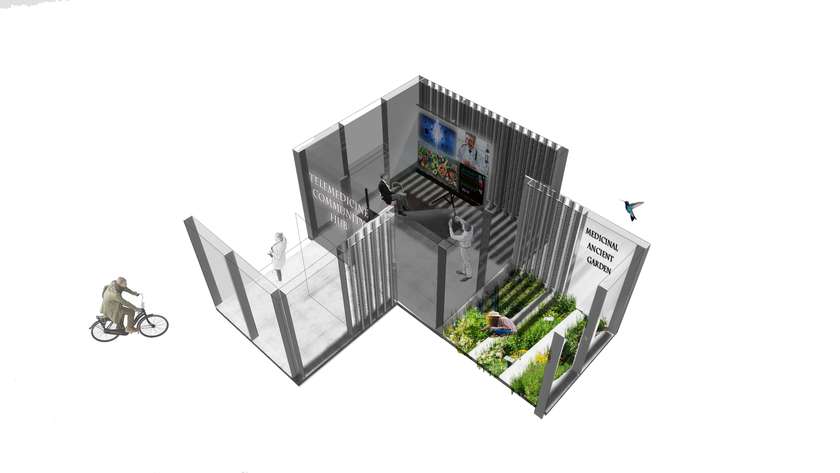
Units can be constructed in plazas, streets or vacant sites through the city with a 250m radius to allow walking and biking while limiting mobility in a neighborhood scale, and therefore prevents the virus from spreading. Modular construction controls the capacity of the unit and enables physical distance but improves neighbors' common activities You can go to your nearest module to join a teleconference with your doctor in a simulation environment and also you can grow your own medicine there
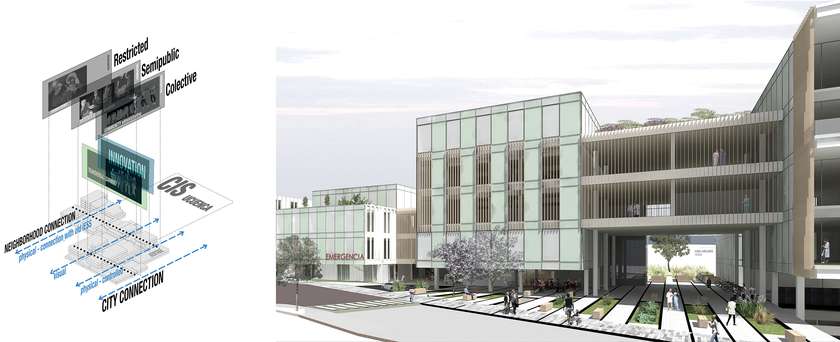
After the use of the units to respond the sanitary emergency, the pieces will be transported to the CIS site for the construction of the new hospital. The concept is based on “diffuse frontiers between health, public space and learning”. The scheme proposed a series of filters which allow using solids and voids to generate common and restricted spaces. Also it permits connections with the city, the neighborhood and the pre existing building.